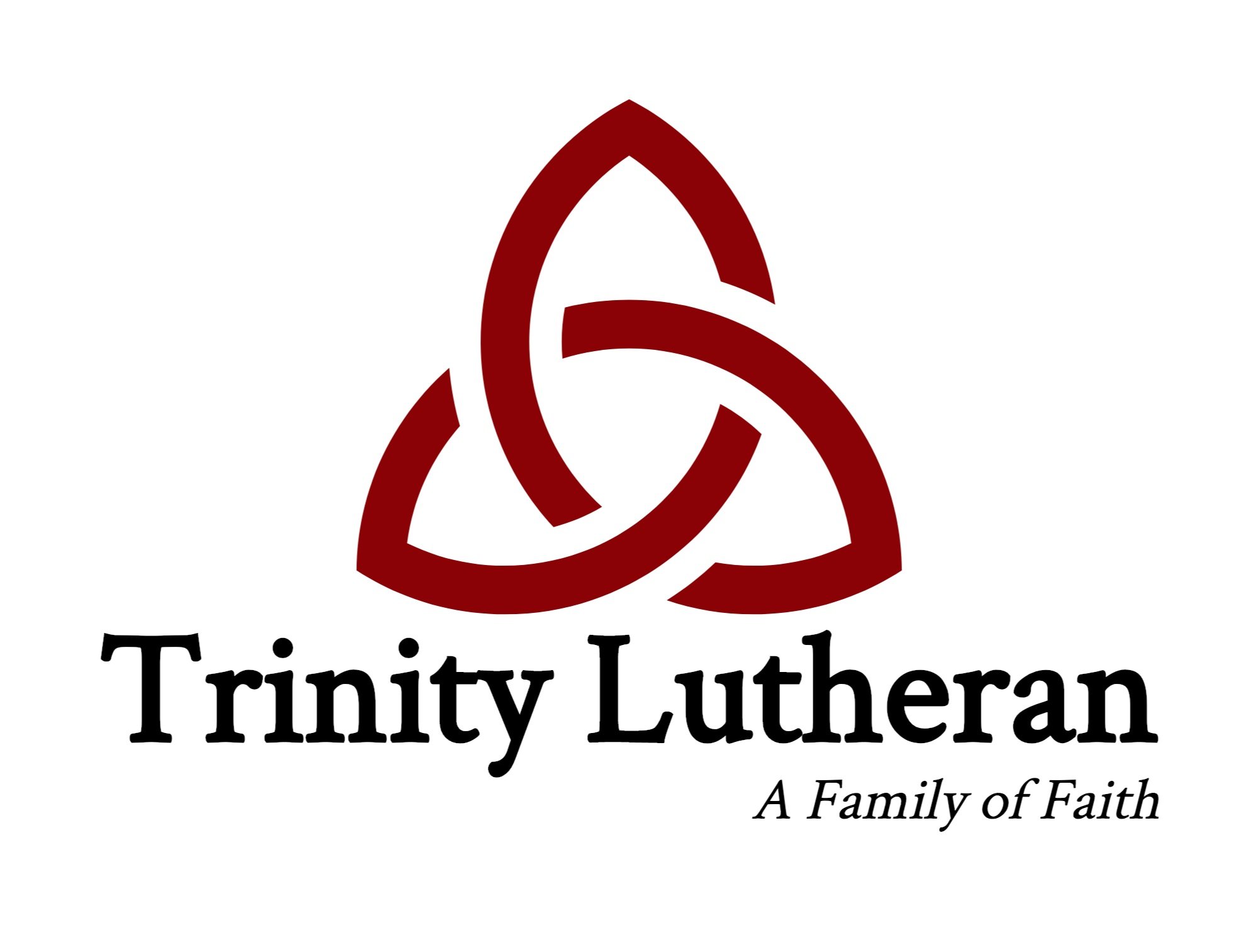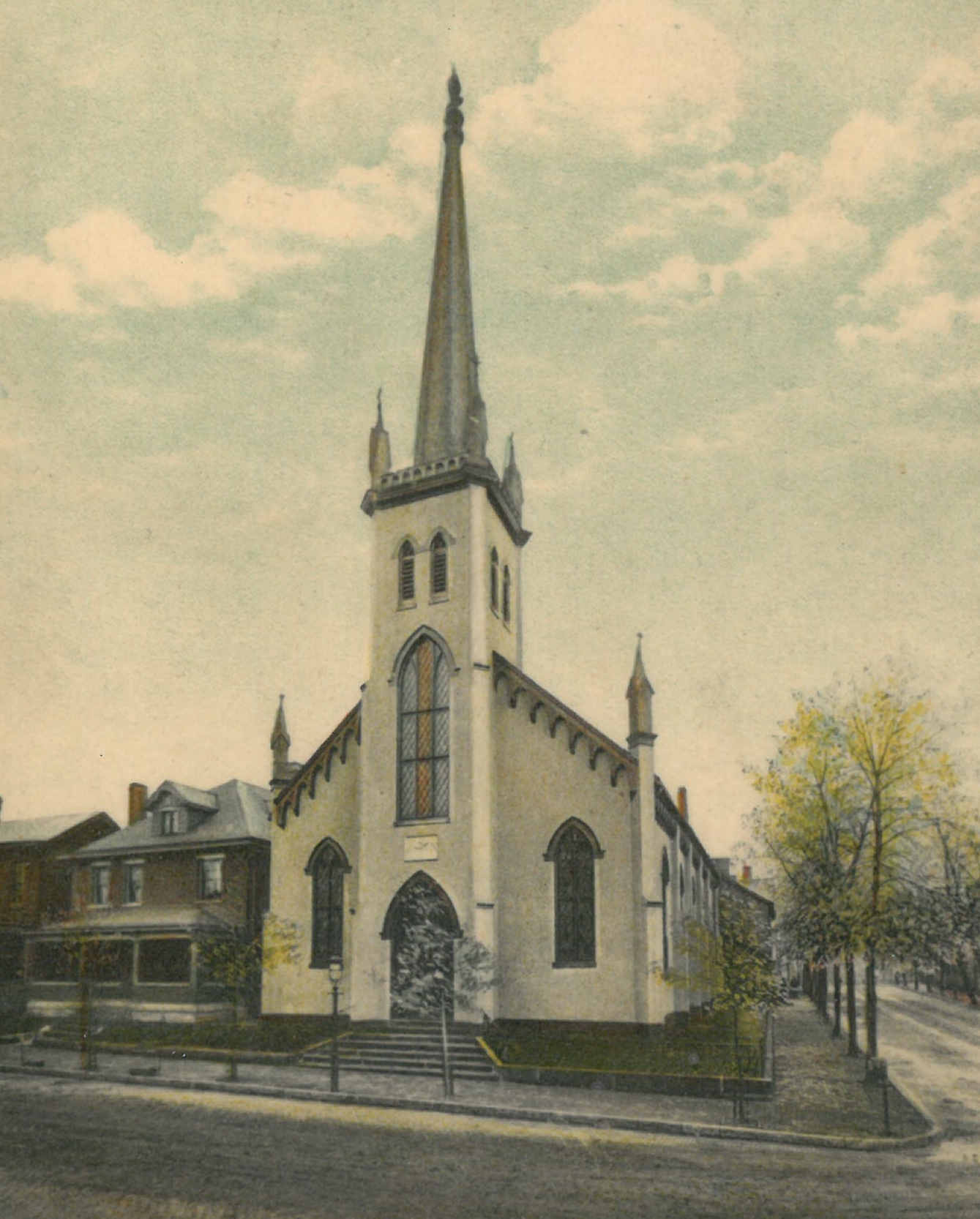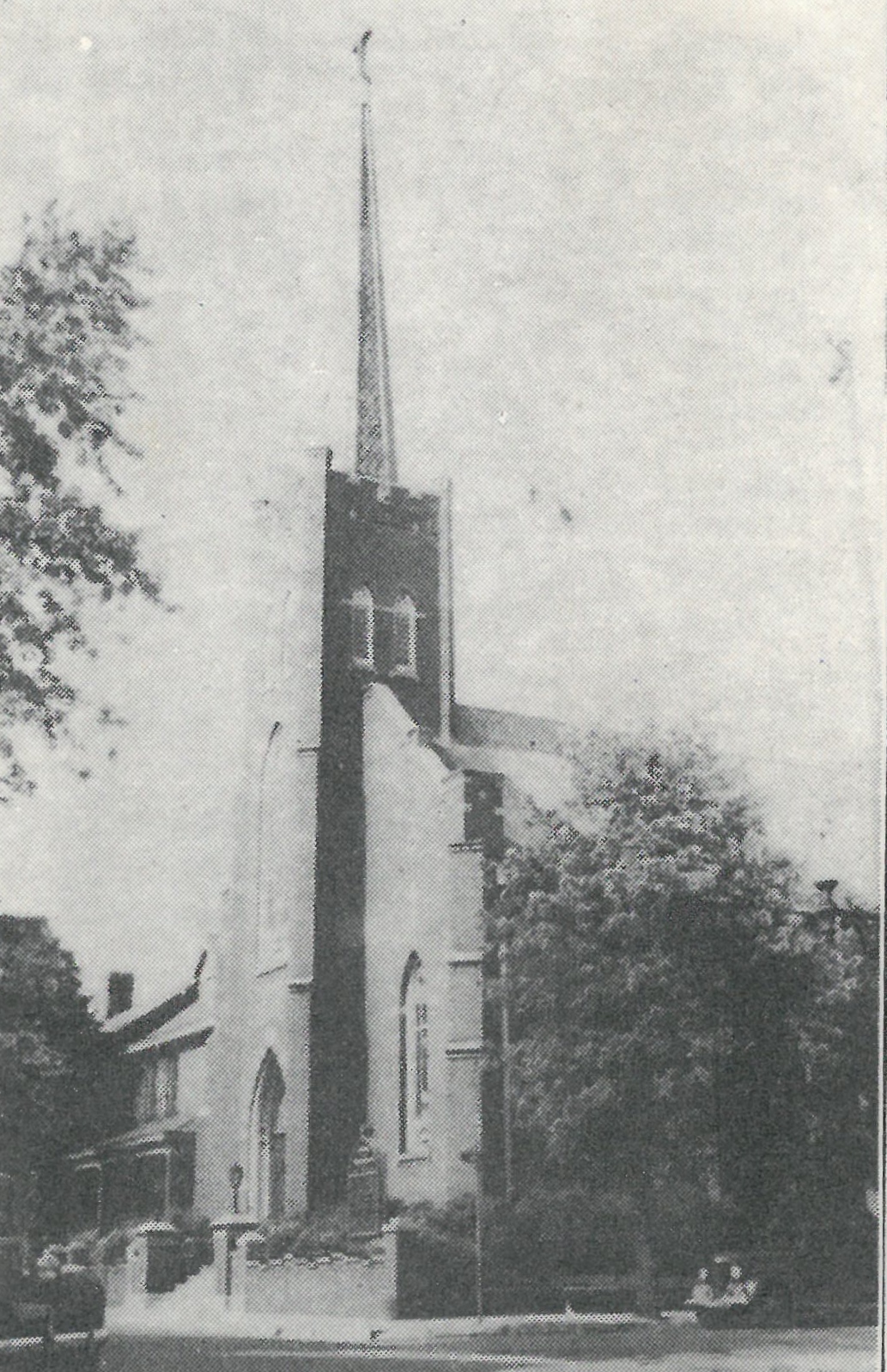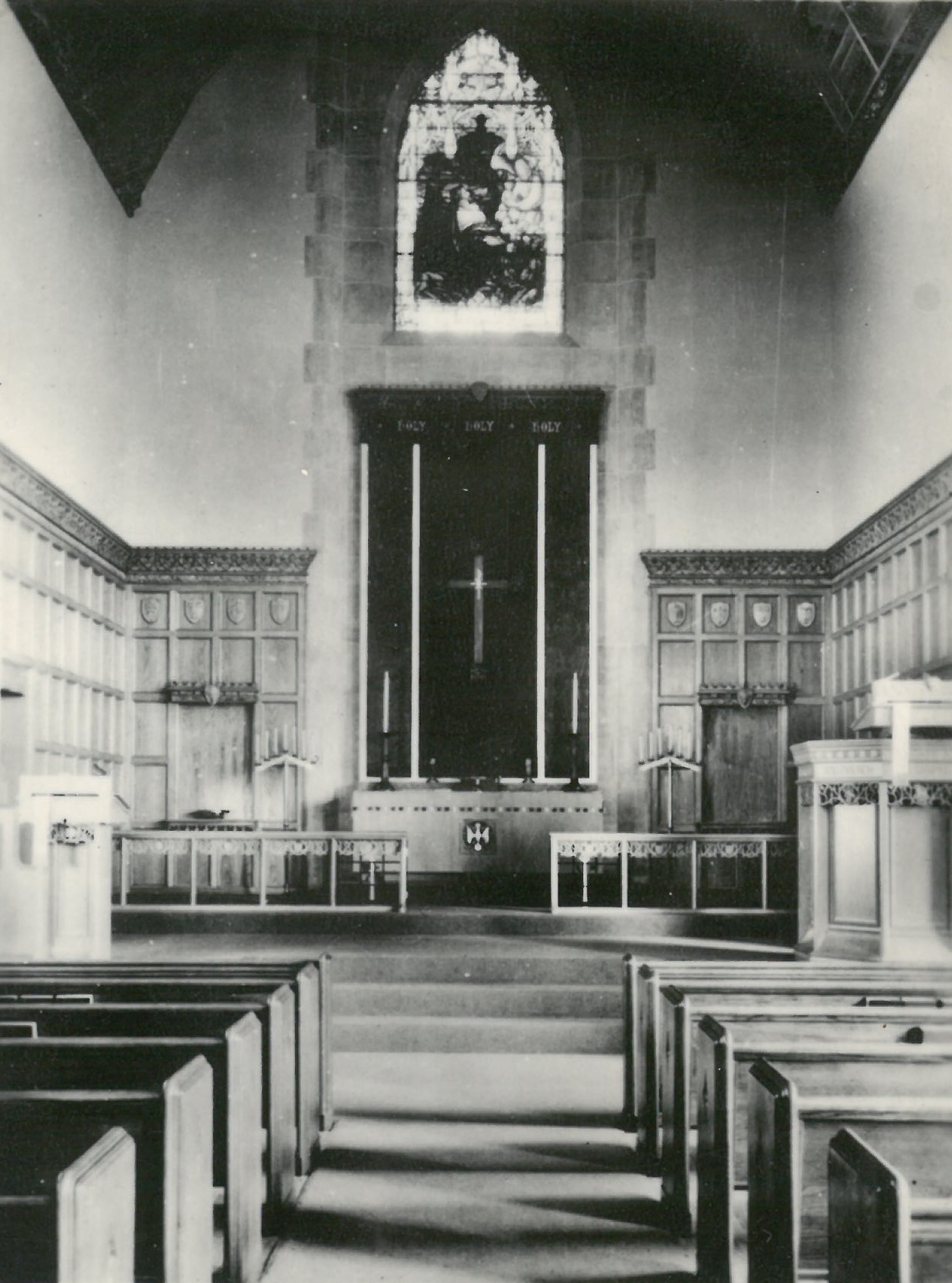Our History
Trinity Evangelical Lutheran Church was founded in 1844 and joined the Missouri Synod about 1860. One of Trinity's early pastors, Dr. Frank, started in Zanesville what is now Synod's official news publication, THE LUTHERAN WITNESS.
There seems to be some confusion as to the exact date that our congregation formed. Our flock was originally a part of the United Evangelical Lutheran and Reformed Friedens (Peace) Church. This congregation is still across the street. It is now called Immanuel.
According to a history published September 6, 1908, in honor of its 90th anniversary, the German Evangelical Peace Church, as Immanuel Church was then called, was founded in December of 1818. During the next 25 years much turmoil developed among the church members. Besides the dispute over language that led to the formation of St. John's Lutheran Church in 1839, there were disagreements over joining the German Lutheran Synod, doctrinal differences, and conflicts over the Sacraments. There was very little "peace" in Peace Church.
In 1842 the congregation drew up a new constitution that was a mixture of Lutheran and Reformed elements. It endeavored to conciliate and keep the non-Lutheran members, but would effectively convert Peace Church into a Lutheran congregation. The constitution was defeated with 33 voting against and 27 in favor of the new charter. Pastor of the church, Eberhard Frederick Minner, called upon a second pastor, Rev. M. Schaad of Newark, Ohio, to help resolve the difficulties. This, however, made matters worse when Rev. Schaad sided with the non-Lutheran majority. On December 18, 1842, Rev. Schaad celebrated Communion with his flock, and on Christmas, Rev. Minner celebrated Communion with the Lutherans. The church presented an unusual spectacle of having two pastors and two congregations that seemed to have nothing in common and each claiming to be the true church and owners of the property. Those were times when there was no peace in Zion and violent scenes occurred even in the sanctuary. Threats and hot words were the order of the day and the warring brethren appealed to the courts to decide the outcome. The Lutherans lost in court and were fined. They left Peace Church under the leadership of John Ungemach and organized the Trinity German Evangelical Lutheran Church in 1843. They did not take Rev. Minner along with them, but, instead, elected Rev. George Bartels from Dayton, Ohio, as their first pastor and built a church at the corner of Seventh and Harvey Streets.
A history of Muskingum County in 1882 stated that our congregation organized on March 16, 1845, but Rev. Bartels arrived in the spring of 1844, to take over his pastoral duties. A newspaper clipping stated that Trinity Evangelical Lutheran Church was founded in 1843 by 32 members who met in the Court House with Rev. Bartels as pastor.
Regardless of our beginning, the first property owned by the congregation was purchased August 3, 1844, Lot No, 6, Chancery Addition, corner of Seventh and Harvey Streets. It was purchased from David S. Dutro for $500 by the trustees of German Evangelical Trinity Church, Ferdinand Timmel and John Riehl.
A towerless brick church was built at a cost of $1,500. Most of the Construction was done by the members. A small frame building was erected beside the church to serve as a parochial school with Rev. Bartels as the teacher. It is interesting to note that there were no free public schools in Zanesville at this time, with the exception of the free school for the poor founded by the John McIntire Estate in 1836.
During 1844, other beginnings were taking place. C.F.W. Walther started Der Lutheraner (The Lutheran). This newspaper helped bring Lutherans together and aided in organizing a Synod. Dr. Walther was the first president of the Synod and also the first president of Concordia Seminary in St. Louis, Missouri.
As Trinity celebrates its 175th anniversary in the fall of 2019, we thank God for His grace and blessings shown to us over the last 175 years and for His promise to be with us in all the days and years to come.





